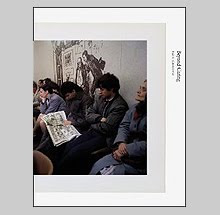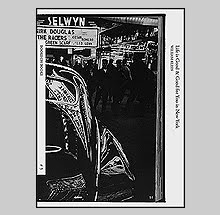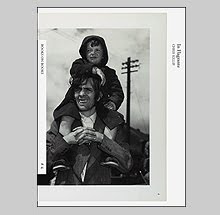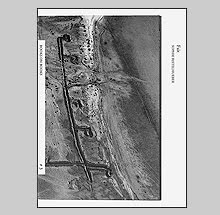720 (Two times around) by Andrew Phelps
“Two hundred years of American technology has unwittingly created a massive cement playground of unlimited potential. But it was the minds of 11 year olds that could see that potential.” - CR Stecyk
"Richard Armijo was kicked out of Whittier (skatepark) again for the last time. Maybe his hair was too short, maybe it was his attitude, maybe he just doesn't care. Things are different this go around because Richard and his friends say they're not going back...Ever." - CR Stecyk
The only other thing I was ever good at in my life before photography was skateboarding. I spent nearly everyday from 1980 to 1989 throwing my body around like a dishrag in roughly paved drainage ditches and halfpipe ramps in Arizona and later New Jersey and New York. Those hardcore years are scarred into my hips and shins. After art school, a part of my life has been spent struggling to stay connected with the feelings I had skating back then. I still kick around a bit and tell myself I "still skate" but it is more in my mind than reality. I was never good enough to gain sponsorship, never liked competing, and now, at 41, suffer a bad knee and the worst of traits a skater can feel, fear. I hold on by watching videos of new generations perform feats on the streets and ramps that my generation couldn't have thought possible. It is a passion, like photography, I imagine I will take to the grave.
I make strong comparisons between skating and photography. Both require large amounts of passion, attention to your surroundings, perseverance and risk taking. I see a skater's line as artistic and improvisational as anything William Forsythe choreographs, as sculptural as Richard Serra, or as mind bending as Matthew Barney. It has creates its own language, both in words and form that is as unique as Kurt Schwitters or John Cage.
There are many books on skateboarding but most fail because they suffer from the same trait that I have succumbed to, nostalgia. Powerhouse Books just published Full Bleed which is a compilation of images from the 70s through the 2000s of east coast skaters tearing up NYC. It's an interesting highlight reel of greatness but nothing more. It leaves me in the past like so many now distant memories, where as Andrew Phelps' newest book 720 (Two times around), a small self-published, spiral-bound book of 16 pictures in an edition of 100, holds more of the actual spirit of skating than any image of Huf or Gonz caught at the apex of a trick.
While photographing in Austria, Phelps discovered an abandoned corporate building which had been infiltrated by skaters. They set up makeshift ramps and obstacles with the aid of a few power tools and ingenuity. Left behind doors unhinged from their frames and upturned desks transform into a playground within the wasteland of empty offices and corridors of failed big business.
There are no skaters present, no "tre-flips" or "blunt slides" being performed. Their presence is felt by the wheel marks on walls and blackened, waxed edges of ledges. The improvisation of construction and the lingering excitement of what must have been felt upon the first run up any of these obstacles hangs in the air. Graffiti on the walls marks a list of the fleeting accomplishments. "Mario bailed" but Phil pulled a "backside crooked grind." That unique language again. For the uninitiated it is nonsensical, but to see a backside crooked grind, that is a universal language.
720 (Two times around) is dedicated to both Mike McGill and Robert Adams. Mike McGill revolutionized skating in the 80s with the invention of a spinning 540 degree air performed 5 feet above the lip of Del Mar skatepark's keyhole bowl. It was a spectacle which stunned onlookers and marked a turning point in skating - perhaps like Adam's The New West marked a turning point in photography. As Phelps concludes in a brief afterword, "When I dream of skating, I'm Mike McGill. When I dream of photographing, I'm Robert Adams." Two very different sources of inspiration, one spectacular and the other deceptively not, both meeting the same outcome to push a medium of expression forward for new generations.























